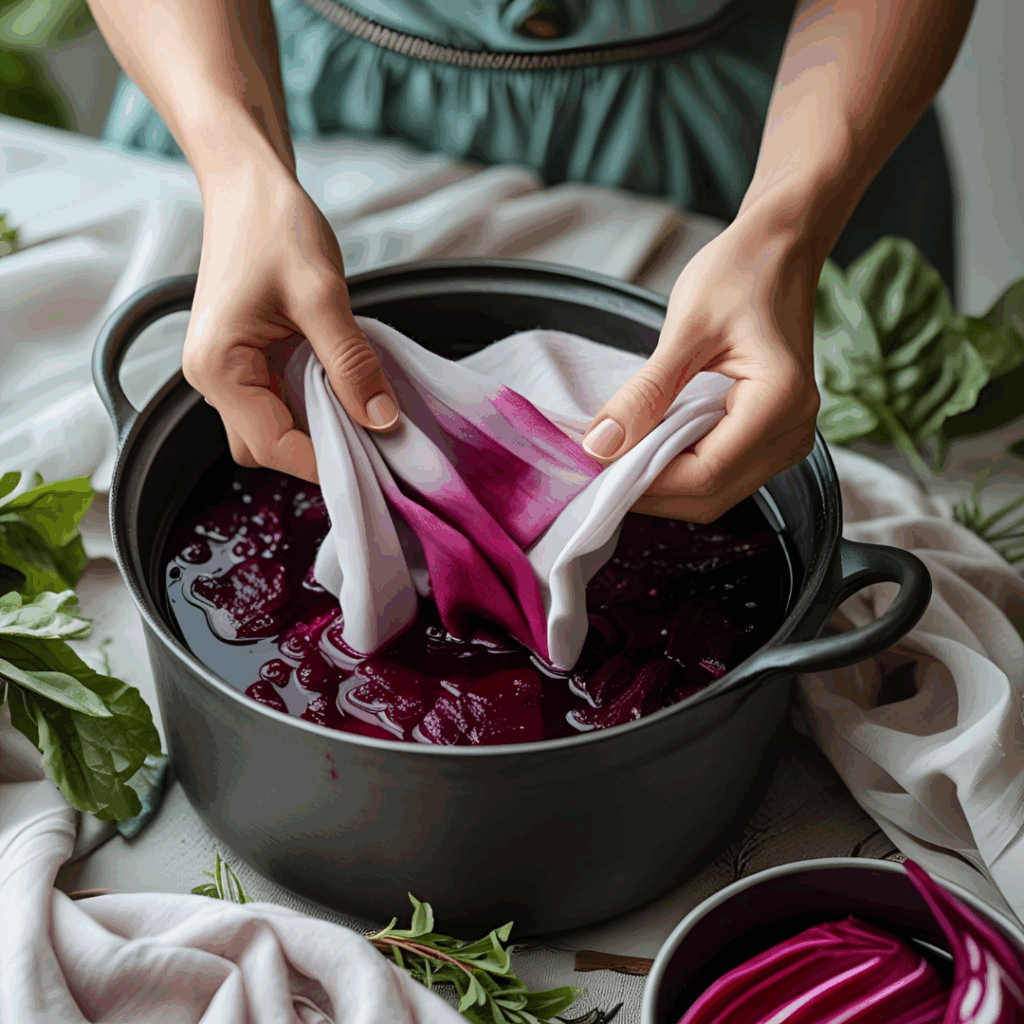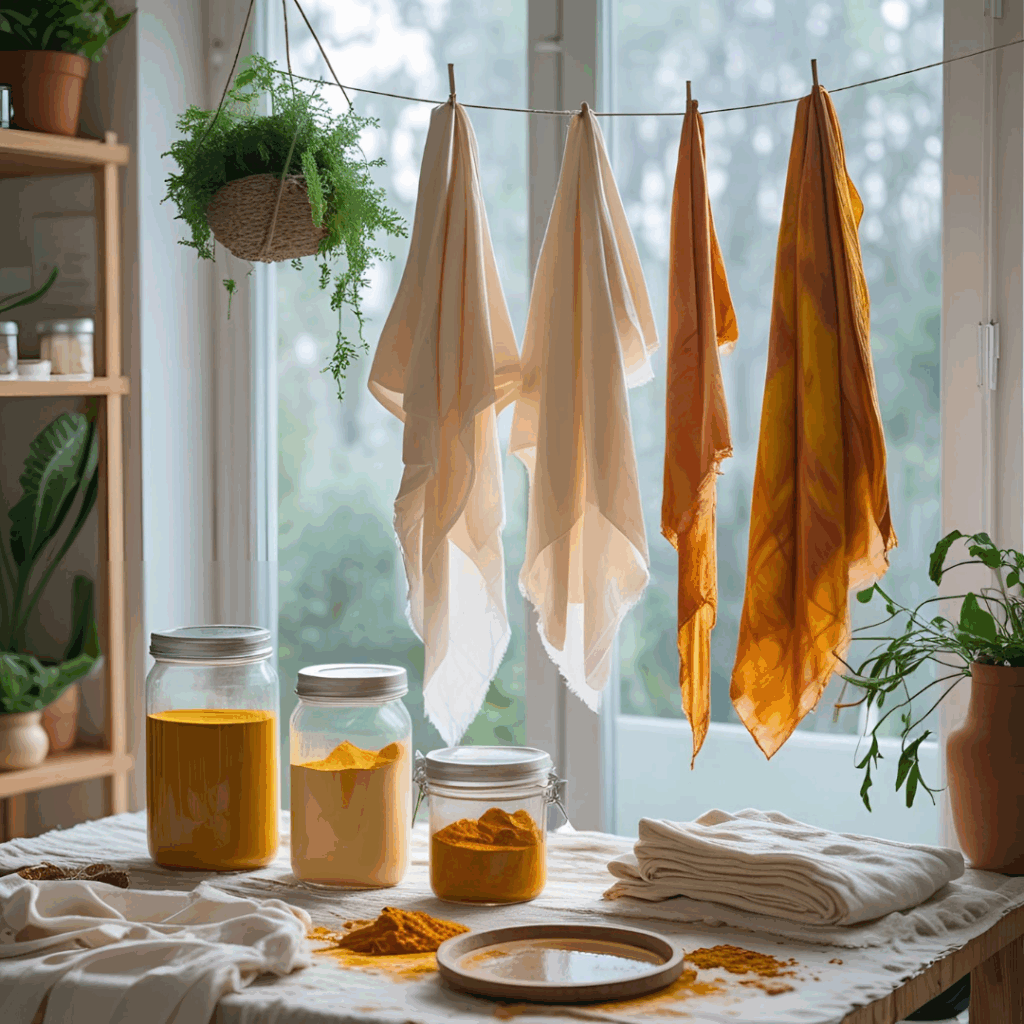Are you passionate about natural colors, handmade products, and sustainable living? What if you could turn that passion into income, with low investment and from the comfort of your home?
This guide is designed for beginners, crafters, and aspiring eco-entrepreneurs who want to launch a home-based business that’s both profitable and meaningful. Welcome to the world of natural dyeing — a creative, green, and highly marketable craft that’s gaining momentum in the handmade and conscious consumer space.
🏡 The Magic of a Mini Dye Studio at Home
You don’t need a big space or fancy equipment to start a profitable dyeing business. Your mini dye studio can begin in your kitchen, laundry area, or even a small balcony — and it doesn’t have to break the bank.
Basic setup (low cost):
- Old stainless steel or aluminum pots (not used for food)
- Recycled buckets or containers
- Cotton fabric scraps or secondhand clothes
- Wooden spoons, gloves, and aprons
- Drying rack or hangers
👉 Estimated startup cost: $50 to $80 USD, depending on what you already have.
This low-overhead setup makes it a perfect project for those looking to start a business at home with minimal investment and high creative freedom.
🌿 Sustainable Materials and Where to Find Them
One of the best parts of natural dyeing is the accessibility and sustainability of the materials. You can often find them in your kitchen or pick them up for free from local markets.
Natural dye sources:
- Onion skins (shades of yellow to orange)
- Beetroot (rich pink to red)
- Turmeric (bright yellow)
- Eucalyptus leaves (earthy green tones)
- Red cabbage (blues and purples)
- Coffee or tea (browns and tans)
These plant-based dyes not only reduce waste but also replace toxic chemicals found in synthetic dyes — making your products healthier for customers and the planet. This aligns perfectly with empreendedorismo verde (green entrepreneurship).

🎨 From Simple to Sellable: The Dyeing Process Uncovered
You don’t need to be an expert to get started. The basic dyeing process is simple, and results can be beautiful — even with minimal experience.
Natural Dyeing Basics:
- Prepare the dye bath (boil plants in water).
- Mordant the fabric (fix the color using vinegar, alum, or salt).
- Dye the fabric and soak.
- Rinse and air dry.
What can you sell?
- Naturally dyed eco-friendly tote bags
- Hand-dyed scarves and headbands
- Upcycled and dyed t-shirts and pillowcases
- Decorative fabric sets for other crafters
- Sustainable gift wrapping cloths (furoshiki)
These products have strong appeal in eco-conscious markets, handmade fairs, and online platforms like Etsy, Instagram Shops, and craft marketplaces.
Let’s Talk ROI: How Much Can You Earn?
Now for the part everyone wants to know — how much can you make? This is where your baixo investimento really shines, offering impressive retorno sobre investimento (ROI).
Here’s a realistic breakdown:
| Category | Value |
|---|---|
| Initial investment | ~$70 USD |
| Monthly production | 20 tote bags |
| Cost per unit | ~$3.50 USD |
| Average selling price per unit | $20 to $30 USD |
| Monthly gross income | $400 to $600 USD |
| Estimated monthly profit | $330 to $500 USD |
That’s a potential ROI of 400–700% in your first month — and that’s before scaling! Remember, individual results may vary based on effort, dedication, and market conditions. As you grow, you can expand to workshops, custom orders, or even digital products, further boosting your renda extra.
Green Marketing Tips for Your Home-Based Business
You don’t need a big marketing budget. With authentic storytelling and visual content, you can attract loyal customers who love eco-conscious products.

How to promote your mini dye studio:
- Start an Instagram or TikTok with behind-the-scenes videos.
- Share “before and after” shots of your dyed fabrics.
- Use hashtags like #naturaldyeing, #handmadewithlove, #greenbusiness, #homebusiness, #ecofriendlyproducts.
- List products on Etsy or your own Shopify store.
- Highlight your process: “Hand-dyed with natural plants and zero waste.”
Consumers today value transparency and purpose, so let your audience fall in love with your craft and mission.
🚧 Challenges & Smart Solutions for Eco-Entrepreneurs
Every business has bumps in the road. Here’s how to navigate common ones:
| Challenge | Solution |
|---|---|
| Limited time | Start part-time, evenings or weekends. |
| Small space | Use foldable tables, wall shelves, and compact storage. |
| Lack of experience | Follow YouTube tutorials or online eco-crafting communities. |
| No sales yet | Offer launch discounts or bundle kits to increase value. |
Remember: slow and steady builds a sustainable brand.
Ready to Start Your Mini Dye Studio? Take the First Step Today
If you’re still reading, it means this idea speaks to you — and now is the time to act.
👉 Want to go further? Download our FREE Natural Dyeing Starter Guide with:
- A printable list of materials
- Step-by-step natural dye recipes
- Pricing tips and product ideas
Sign up for our newsletter and get weekly inspiration, tutorials, and business insights to build your own eco-friendly income stream from home!







